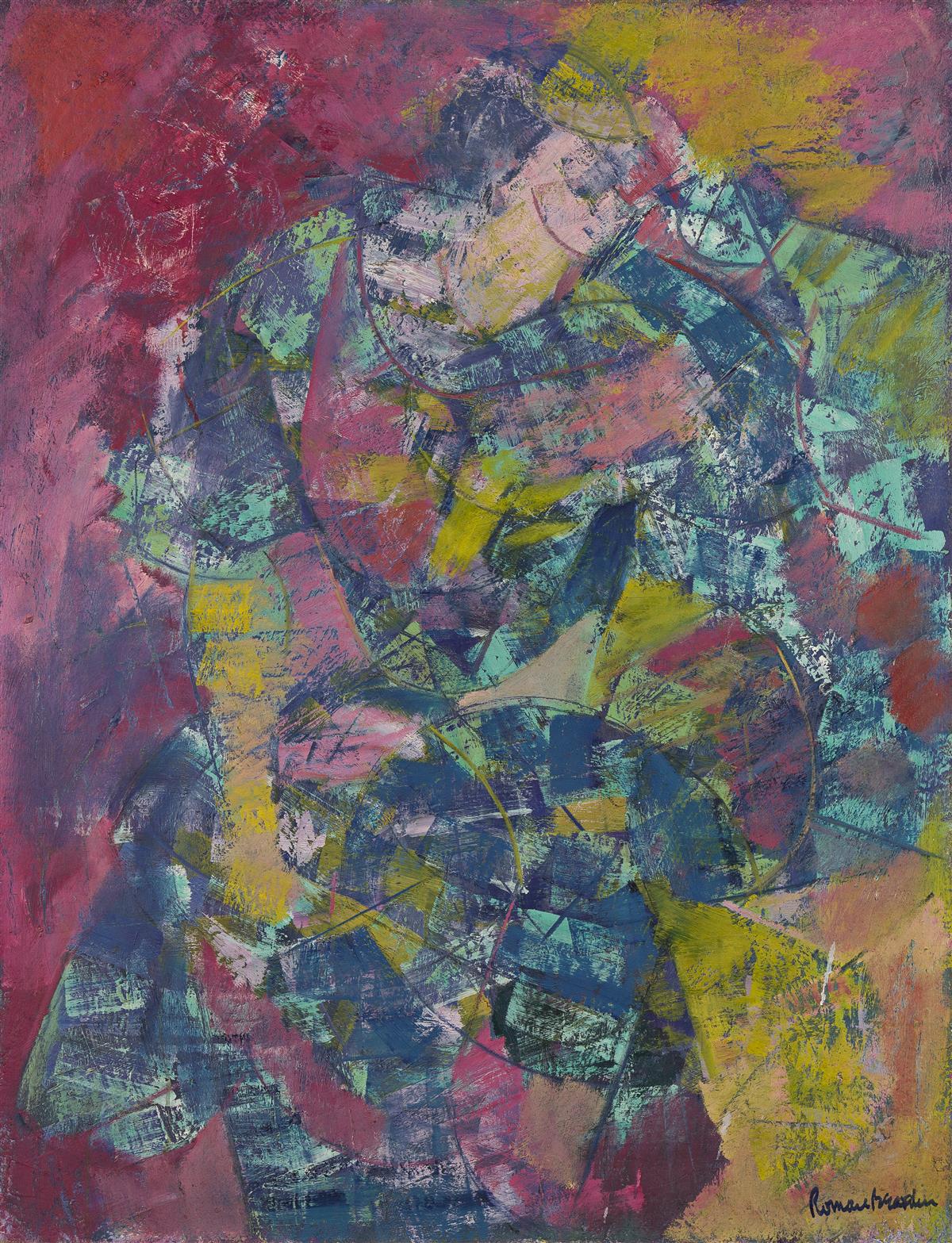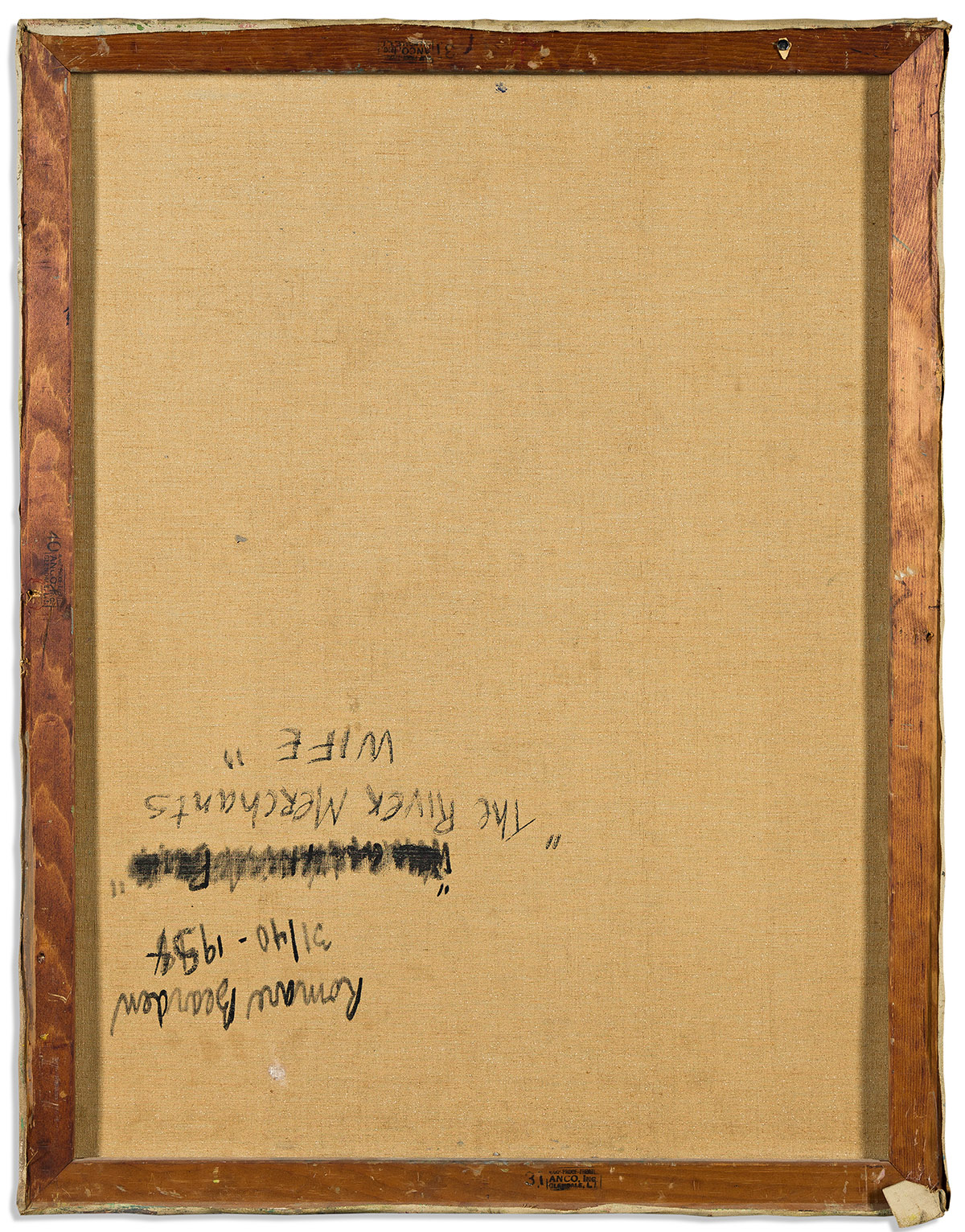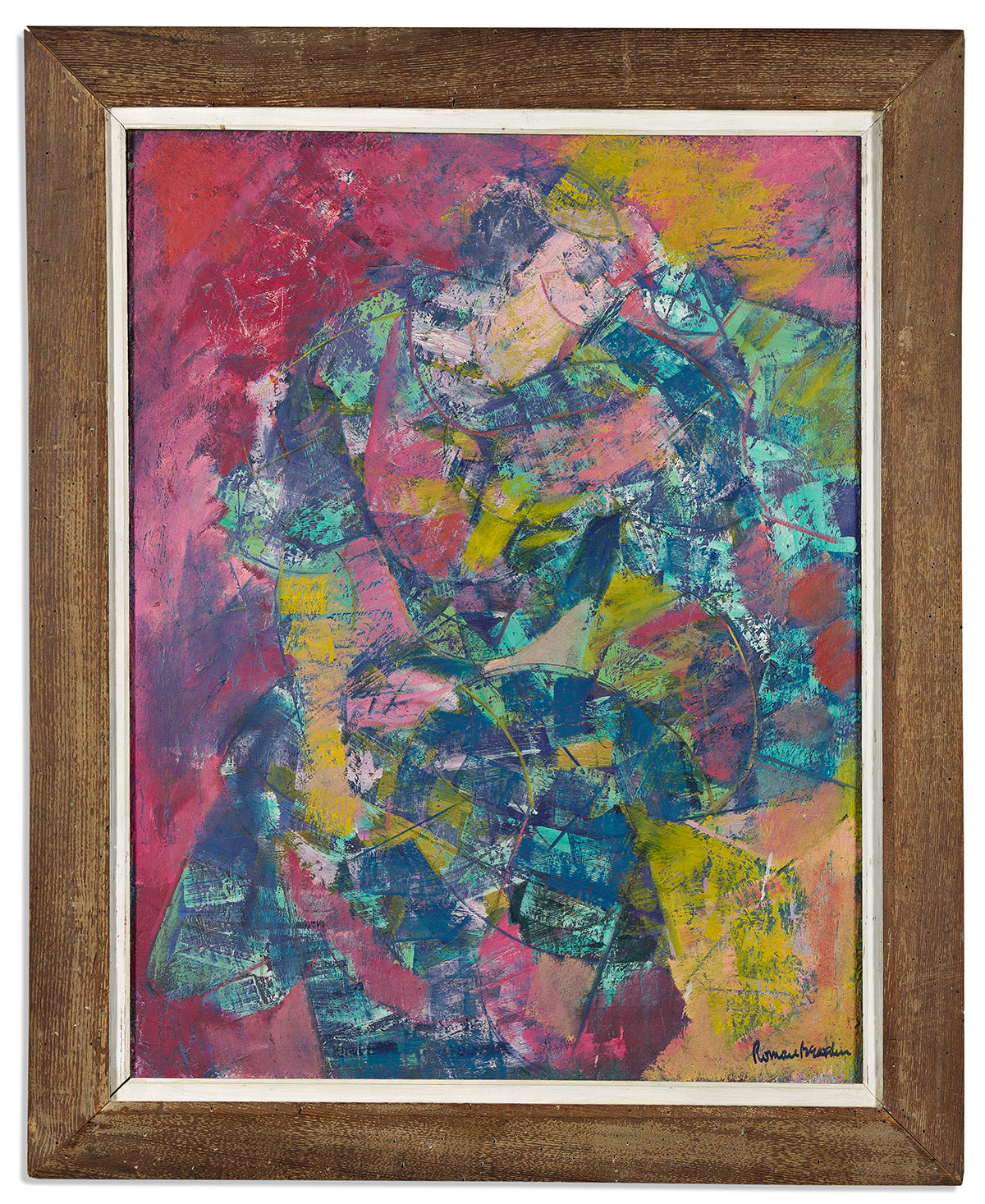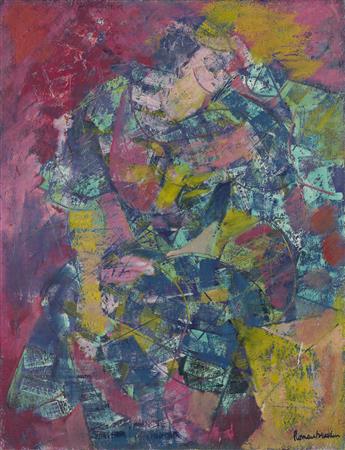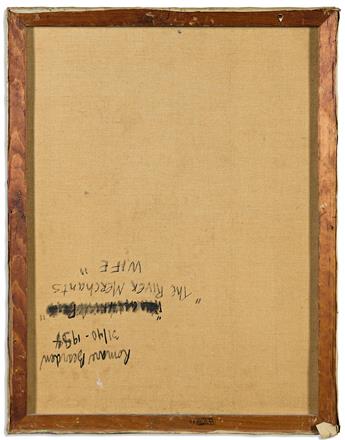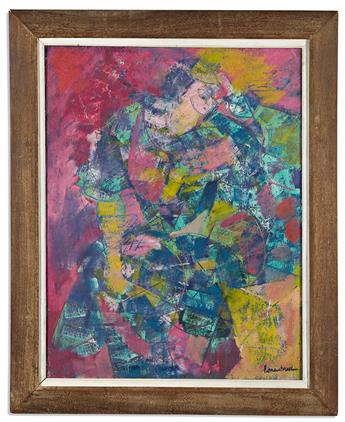Sale 2649 - Lot 36
Price Realized: $ 95,000
Price Realized: $ 118,750
?Final Price Realized includes Buyer’s Premium added to Hammer Price
Estimate: $ 100,000 - $ 150,000
ROMARE BEARDEN (1911 -1988)
The River Merchant's Wife.
Oil on linen canvas, 1954. 1016x787 mm; 40x31 inches. Signed in oil, lower right recto. Signed, titled and dated in oil, verso.
Provenance: acquired directly from the artist, private collection, New York and West Orange, NJ (1954); thence by descent, private collection, New York (2011).
Exhibited: Barone Gallery, New York, October 31 - November 24, 1955. This solo exhibition was Romare Bearden's first since 1949; it included oil and watercolors, with a printed catalogue.
The River Merchant's Wife is a significant and beautiful painting of abstraction from an important, but, until recently, largely overlooked period of Romare Bearden's mid-career. The title and its technique reflect Bearden's keen interest in poetry and Chinese art at the time..
The painting's title apparently comes from Ezra Pound's translation of Rihaku (Li T'ai Po)'s The River-Merchant's Wife: A Letter, one of Pound's most anthologized poems. Myron Schwartzman writes howThe River Merchant's Wife was one of three paintings critically praised in the New York Times review of Bearden's 1955 exhibiton at the Barone Gallery. The reviewer notes that in The River Merchant's Wife the figure "seems to have stepped from the pages of an old Chinese legend." The other notable paintings from the period include Blue Lady, 1955 and Mountains of the Moon, circa 1995, both recently exhibited in the traveling museum exhibition Romare Bearden: Abstraction and A Walk in Paradise Gardens, 1955, collection of the National Museum of African American History and Culture, Smithsonian Institution.
In the 1950s, Bearden developed a strong affinitty with Zen Buddhism, and studied the principles of calligraphy and Chinese landscape painting. He worked closely with a Mr. Wu, who owned a store on Bayard Street, near Bearden's Canal Street studio. Bearden considered Mr. Wu an authority on Chinese art, and soon recognized the many abstract possiblities found in Chinese landscape painting.
Bearden's early 1950s paintings embraced formal characteristics found in both Chinese art and modern abstraction. This included the flatness of pictorial space and a fragmentation of color and light. Myron Schwartzman writes how Bearden shared this modernist vision with his friend and fellow abstract painter Carl Holty. Bearden wrote to Holty in 1952: "I rather envision large planes of light that spell out the forms; with the philosophic intent that in a world of darkness we could hardly conceive of form except in a tactile sense. And, in a sense, the artist with his colors lights his world....While I think of some light source that moves across the canvas, pausing to become yellow, blue, pink or what you have during its passage: and always yellow, blue or pink according to the painter's desire, so that the effect would have nothing to do with illumination or atomspheric effects". With its striking proto-Cubist structure and distinctive palette, Bearden's The River Merchant's Wife. appears to be the fruition of his earlier vision. It is also notable that Bearden married Nanette Rohan in September of 1954. Fine p. 221; Schwartzman p. 183-86.
The River Merchant's Wife.
Oil on linen canvas, 1954. 1016x787 mm; 40x31 inches. Signed in oil, lower right recto. Signed, titled and dated in oil, verso.
Provenance: acquired directly from the artist, private collection, New York and West Orange, NJ (1954); thence by descent, private collection, New York (2011).
Exhibited: Barone Gallery, New York, October 31 - November 24, 1955. This solo exhibition was Romare Bearden's first since 1949; it included oil and watercolors, with a printed catalogue.
The River Merchant's Wife is a significant and beautiful painting of abstraction from an important, but, until recently, largely overlooked period of Romare Bearden's mid-career. The title and its technique reflect Bearden's keen interest in poetry and Chinese art at the time..
The painting's title apparently comes from Ezra Pound's translation of Rihaku (Li T'ai Po)'s The River-Merchant's Wife: A Letter, one of Pound's most anthologized poems. Myron Schwartzman writes howThe River Merchant's Wife was one of three paintings critically praised in the New York Times review of Bearden's 1955 exhibiton at the Barone Gallery. The reviewer notes that in The River Merchant's Wife the figure "seems to have stepped from the pages of an old Chinese legend." The other notable paintings from the period include Blue Lady, 1955 and Mountains of the Moon, circa 1995, both recently exhibited in the traveling museum exhibition Romare Bearden: Abstraction and A Walk in Paradise Gardens, 1955, collection of the National Museum of African American History and Culture, Smithsonian Institution.
In the 1950s, Bearden developed a strong affinitty with Zen Buddhism, and studied the principles of calligraphy and Chinese landscape painting. He worked closely with a Mr. Wu, who owned a store on Bayard Street, near Bearden's Canal Street studio. Bearden considered Mr. Wu an authority on Chinese art, and soon recognized the many abstract possiblities found in Chinese landscape painting.
Bearden's early 1950s paintings embraced formal characteristics found in both Chinese art and modern abstraction. This included the flatness of pictorial space and a fragmentation of color and light. Myron Schwartzman writes how Bearden shared this modernist vision with his friend and fellow abstract painter Carl Holty. Bearden wrote to Holty in 1952: "I rather envision large planes of light that spell out the forms; with the philosophic intent that in a world of darkness we could hardly conceive of form except in a tactile sense. And, in a sense, the artist with his colors lights his world....While I think of some light source that moves across the canvas, pausing to become yellow, blue, pink or what you have during its passage: and always yellow, blue or pink according to the painter's desire, so that the effect would have nothing to do with illumination or atomspheric effects". With its striking proto-Cubist structure and distinctive palette, Bearden's The River Merchant's Wife. appears to be the fruition of his earlier vision. It is also notable that Bearden married Nanette Rohan in September of 1954. Fine p. 221; Schwartzman p. 183-86.
Exhibition Hours
Exhibition Hours
Aliquam vulputate ornare congue. Vestibulum maximus, libero in placerat faucibus, risus nisl molestie massa, ut maximus metus lectus vel lorem.



